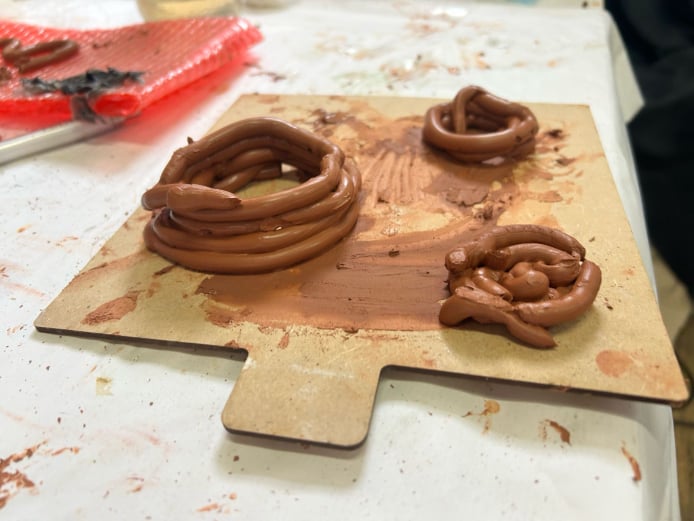
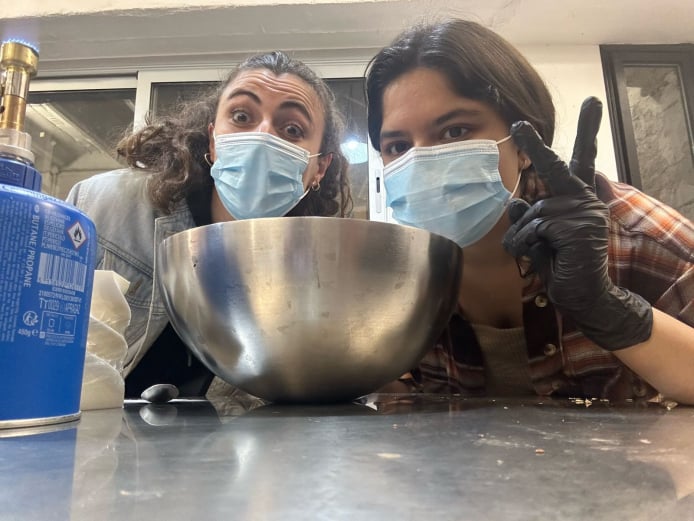
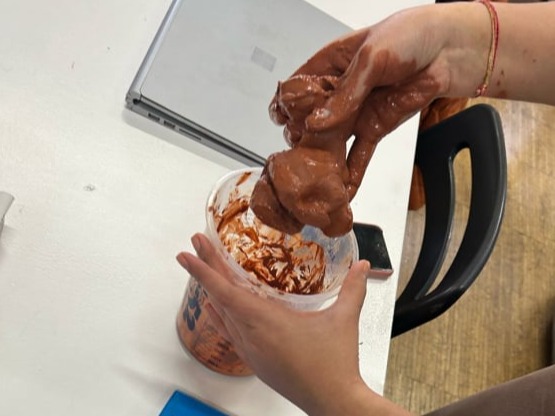
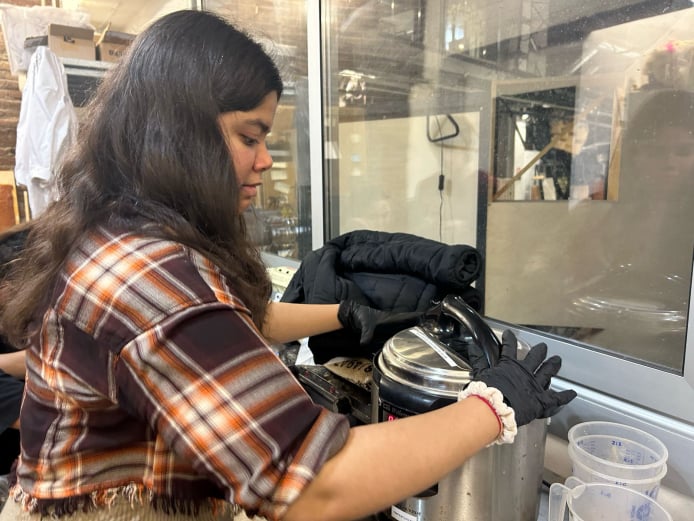
Paste printing with clay is a technique used in ceramics where a thick, paste-like consistency of clay is applied onto a surface using various tools such as brushes, spatulas, or stencils. This method allows for intricate designs and textures to be created on pottery or sculpture. The paste is often manipulated or shaped before drying and firing to achieve desired effects. It's a versatile technique offering artists a range of possibilities for creative expression in clay work.
Mycelium
Mycelium is the vegetative part of a fungus, consisting of a network of fine, branching threads called hyphae. It's commonly found in soil and decaying organic matter. When used in biomaterial production, mycelium is cultivated on agricultural waste such as sawdust or straw, providing nutrients for its growth.
During cultivation, mycelium colonizes the substrate, binding it together and forming a dense network. This network acts as a natural adhesive, binding the substrate particles into a solid mass. After the mycelium has fully colonized the substrate, it is typically dried to halt further growth and to create a stable biomaterial.
The resulting mycelium-based biomaterial is lightweight, durable, and biodegradable, making it suitable for various applications such as packaging, insulation, construction materials, and even fashion. It's an environmentally friendly alternative to traditional materials like plastic or foam, offering a sustainable solution for industries seeking eco-friendly options.
Kombucha
Kombucha is a fermented tea beverage made by fermenting sweetened tea with a culture of yeast and bacteria. The culture, often referred to as a SCOBY (symbiotic culture of bacteria and yeast), metabolizes the sugars in the tea, producing acids, carbon dioxide, and trace amounts of alcohol.
To transform kombucha into a biomaterial, the fermentation process is extended to allow the formation of a cellulose mat by the bacteria in the SCOBY. The bacteria, typically strains of Acetobacter xylinum, produce cellulose as a byproduct of their metabolism. This cellulose forms a thin, gelatinous layer on the surface of the kombucha liquid, which can be harvested and dried to create a flexible, biodegradable material.
Once harvested and dried, the resulting kombucha cellulose can be molded, shaped, or layered to create a variety of products, including packaging materials, textiles, and even leather substitutes. This process offers a sustainable alternative to traditional materials, as it utilizes renewable resources and produces minimal waste.
Creating Samples
We created a sample with clay and water to see the consistency of what works best with paste printing. We used a syringe to then make small samples, which turned out to be harder than expected. We then 3D printed a small heart shaped sample to put mycelium in it.




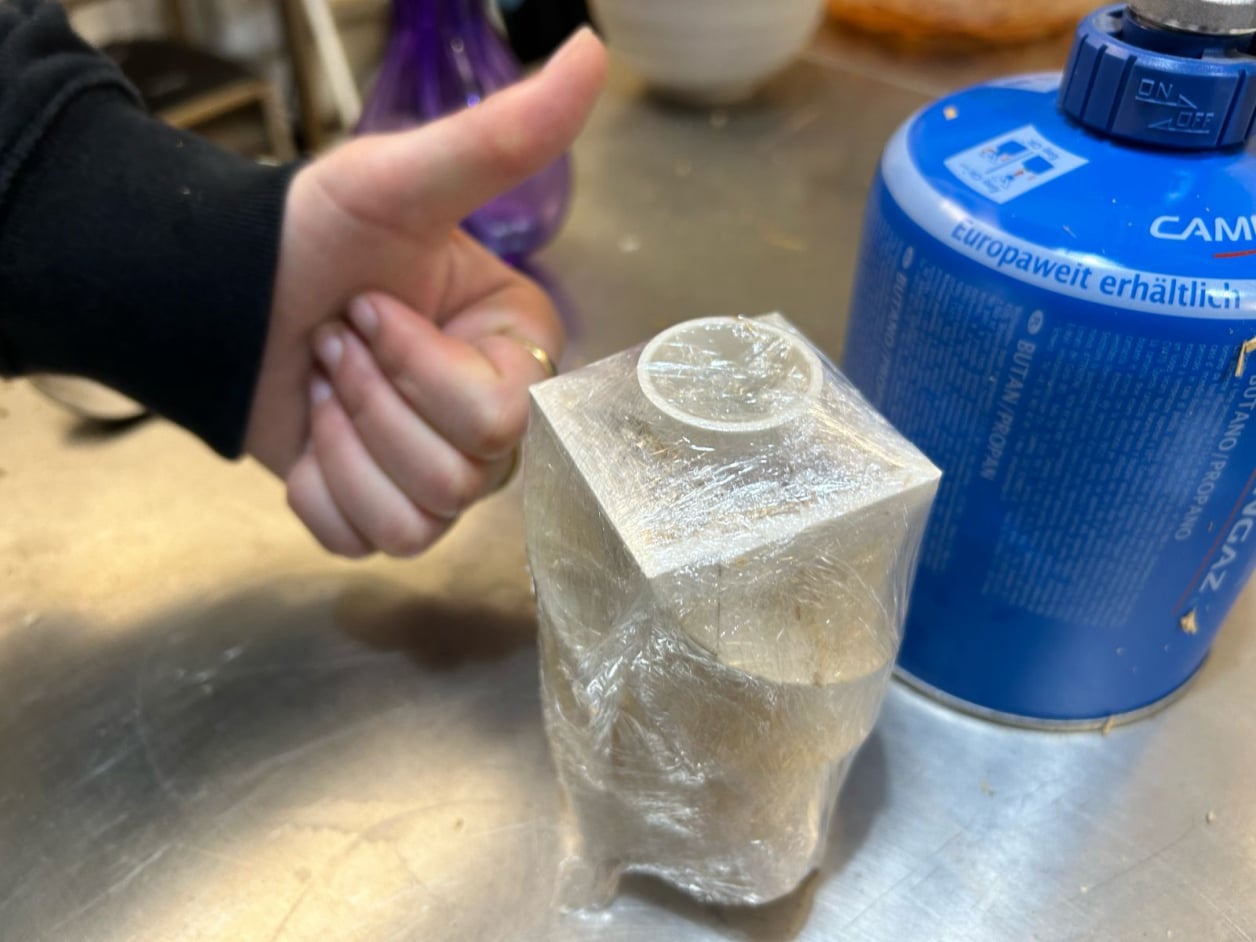
The final output for now is one 3D printed candle stick with a Mycelium mold that hopefully grows in the next few months. We also want to work more with paste printing for our design intervention ideas.
This week, I delved into the fascinating world of mycelium and dabbled a bit with clay. It was an enlightening experience that underscored the importance of safety precautions and meticulous sterilization practices when working with biological materials.
Handling mycelium demands a keen awareness of safety measures to prevent contamination and ensure a healthy working environment. From wearing appropriate protective gear to maintaining sterile conditions throughout the process, these precautions are essential to successful outcomes and personal well-being.
Sterilizing equipment and work surfaces became a routine but crucial step in my workflow. It's incredible how the smallest contaminants can derail the entire process, emphasizing the need for diligence and attention to detail. Each sterilized tool or surface represented a barrier against unwanted pathogens, preserving the purity of the mycelium culture and the integrity of the final biomaterial.
Working with mycelium proved to be both important and enjoyable. Its potential as a sustainable biomaterial is undeniable, offering eco-friendly solutions across various industries. However, it also demands patience and a respect for the natural rhythms of growth. Unlike traditional manufacturing processes, mycelium cultivation requires time for the organisms to proliferate and form cohesive networks. This patience is rewarded with unique, biodegradable materials that hold tremendous promise for a greener future.
In contrast, exploring clay offered a tactile and grounding experience. While safety precautions were still essential, the focus shifted towards mastering techniques and embracing the creative process. The malleability of clay allowed for experimentation and expression, reminding me of the beauty in imperfection and the joy of hands-on craftsmanship.
Overall, this week's exploration of mycelium and clay provided valuable insights into the intersection of art, science, and sustainability. It reinforced the importance of safety practices, highlighted the potential of biomaterials, and fostered a deeper appreciation for the inherent beauty of natural processes.
Website Software